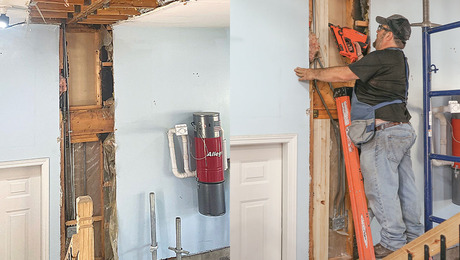This is for curiosity only.
I’ve got a 4′ by 28″ by 8″ 1940 cast iron radiator lying on its side in my kitchen as a very ill-placed piece of sculpture. A guy can cart it away as early as tomorrow, and I don’t give a hoot what happens to it, although I’d rather see it, or the metal, recycled.
There is a reuse market for these things, but this one has a crack in the end segment at the socket for the bleed valve.
But just out of curiosity:
How were these things made? Would anyone motivated to do so be able to repair it or reuse the remaining segments?















Replies
Use the remaining segments? Yes, unless it's a really rare brand. There are people who make a business of buying old radiator parts to mix and match for reuse.
Repairing a crack probably wouldn't make economic sense, again unless it's a really rare brand.
Edited 12/31/2004 9:11 pm ET by Uncle Dunc
Thanks.
Overheard somebody at the plumbing supply place yesterday cursing himself for having smashed up old rads and now needs to replace them. He was quoted 15 to 20 per fin if/when used rads were in stock. So, I'll make a few calls and see if I can give someone the opportunity to salvage 18 of 19 fins here. Should be lots of local homes with matching rads. If someone can use them, I'm tickled.
I like the look of the stelrad replacement, but don't have specs or pricing until work is back to normal in the new year.
A rad on its side makes a great plate warmer....well, a working rad on its side.
:)
Rich Beckman
Another day, another tool.
It's proving to be very useful. Maybe we'll keep it where it is.
It's a ...- superior security feature (nobody is opening that door)- diet aid for cats who aren't willing to climb past it to dish- excuse to not using cleaning products in yonder cupboard- and a (questionnable) piece of art, but hey, who's to judge taste